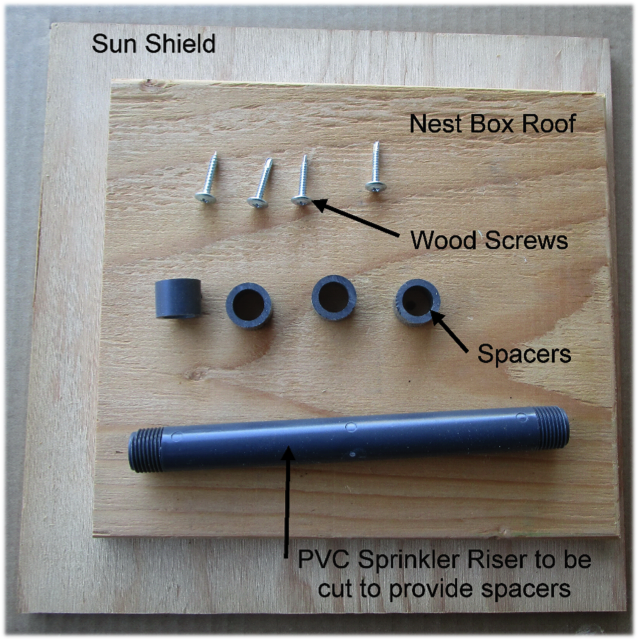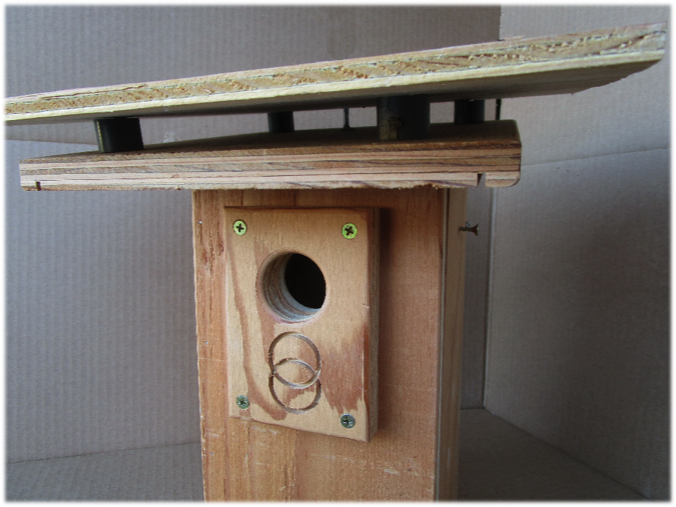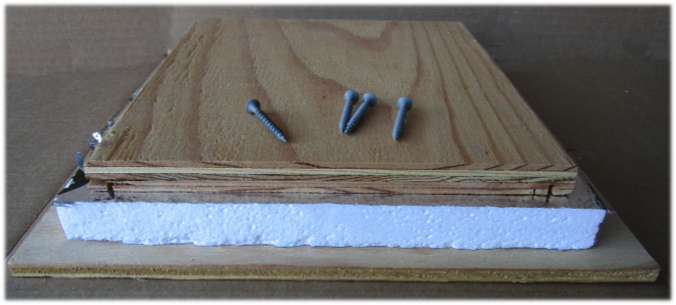Using Sun Shields to Reduce the Internal Temperature of Exposed Nest Boxes
A recent study, “Reducing the Internal Temperature of Exposed Nest Boxes”, was done to determine what can be done to reduce the internal temperature of exposed nest boxes. The test results showed that painting nest boxes white was most effective and with adding a sun shield to the top of nest boxes less effective.
As stated above painting nest boxes white was most effective, but this may not be practical for several reasons including white as being an objectionable color. The effectiveness of other earth-tone colors hasn’t been determined. Enter installing a sun shield. The shield is basically a second and larger roof attached to the top of the box that provides shade. Spacers can be installed between the two roofs to provide an air gap which allows air to flow between the roofs, or a layer of foam insulation can be sandwiched between the two roofs. I suspect the latter to be more effective although at this time no test have been done to confirm this. Use of the insulation would also be more costly.
What follows is not a complete plan, but is general enough so with modification it can be applied to existing nest boxes. The photo below shows the parts that are involved.

- The nest box roof is just an example of a roof laid upon a sun shield. In this case it shows that the ¼” thick shield is larger than the roof. I suggest having the shield 1 to 1-1/2 inch larger on all sides than the roof so the shield shades the box more. The style and mounting method of the box may alter this suggestion. If the box is a hanging nest box, a hole must be drilled in the shield to accommodate the hanger. Optimizing the use of a sheet of plywood may also play a role is the shield’s size.
- The spacers are cut from ½ inch PVC sprinkler risers. Various lengths of risers are available with the longer risers being more cost effective.
- The screws are to be driven through the shield and spacers into the roof. Ideally you will predrill 4 holes in the shield near the 4 corners of the roof.
- Spacer and screw lengths will vary. The screws must not protrude into the box. In this example the shield is ¼” thick, and the box’s roof is 5/8” thick. If 1-5/8” screws are to be used, the spaces height should be 7/8”.


Foam insulation replaces the need for spacers. The photo on the left shows a piece of foil backed insulation trimmed to near the size of the roof. The same consideration as to screw length is applicable
The study’s conclusion was that a sun shield installed on nest boxes can make a difference in limiting the temperature inside nest boxes. Shields could be installed on the west side of the box to help during the hottest part of the day.
Hanging nest boxes in the canopy of trees could negate the need for painting the boxes or installing a sun shield.
Limiting the internal temperature of nest boxes is no guarantee that eggs will hatch and nestlings will fledge. There are numerous factors that can affect the nesting results one being availability of insect prey.
Lee Pauser, San Jose, CA, January 25, 2022
